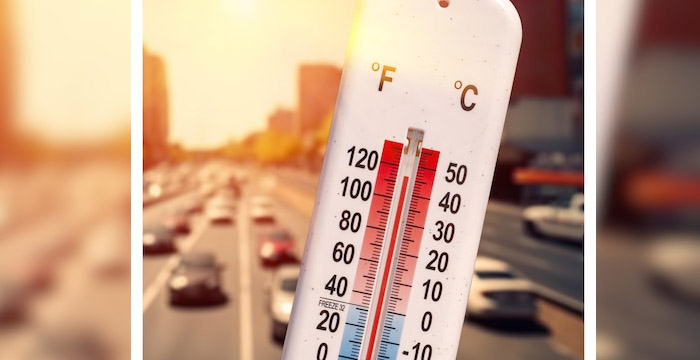Temperature conversions between Celsius and Fahrenheit can often be confusing, especially when dealing with extreme weather conditions. A commonly asked question is: Which is colder, –40°C or –40°F?
The answer is surprisingly straightforward—they are the same temperature. This article explains why this happens and explores the biological effects of such extreme cold, including risks such as hypothermia and frostbite. It also discusses how quickly cold injuries can occur and what long-term health issues are associated with repeated exposure to low temperatures.

The Science Behind –40°C Equals –40°F
Celsius and Fahrenheit are two widely used temperature measurement scales, but they differ significantly in both reference points and scale increments.
On the Celsius scale:
- Water freezes at 0°C
- Water boils at 100°C
On the Fahrenheit scale:
- Water freezes at 32°F
- Water boils at 212°F
To convert between Celsius and Fahrenheit, the following formulas are used:
- From Celsius to Fahrenheit: °F = (°C × 9/5) + 32
- From Fahrenheit to Celsius: °C = (°F − 32) × 5/9
To find the temperature at which both scales show the same value, we can set the two temperature values equal and solve the equation:
Let °C = °F = x
Then, x = (x × 9/5) + 32
Solving for x: Multiply both sides by 5 to eliminate the denominator: 5x = 9x + 160
Bring all terms to one side: 5x - 9x = 160
-4x = 160
x = -40
Therefore, −40°C is equal to −40°F.
This is the unique intersection point on both temperature scales, making it a notable scientific fact and a helpful reference point in both everyday life and extreme weather discussions.
Real-World Implications: What -40 Feels Like

A temperature of –40 degrees, whether in Celsius or Fahrenheit, is considered dangerously cold. At this level, severe effects can occur quickly:
- Skin exposed to the air may freeze within minutes.
- Breathing in such temperatures can cause airway irritation.
- Car batteries often fail, and fuel can begin to gel.
- Even machinery and electronics may malfunction in these conditions.
Regions such as Siberia, Antarctica, and parts of Northern Canada regularly experience such temperatures during winter months. Understanding the risks and required precautions is critical in such environments.
Effects of Extreme Cold on the Human Body
At –40 degrees, the human body enters a state of intense physiological stress. Since the body needs to maintain an internal temperature of around 37°C (98.6°F), it responds aggressively to the cold.
Immediate Biological Responses
- Shivering: This is an involuntary response to generates heat through muscle activity.
- Vasoconstriction: Blood vessels near the skin constrict to reduce heat loss, directing warmth to vital organs.
- Numbness: Reduced blood flow causes extremities like fingers, toes, and ears to go numb, increasing the risk of injury.
Hypothermia: A Critical Threat
Hypothermia occurs when the core body temperature drops below 35°C (95°F). This can develop within minutes at –40°C or –40°F.
Early Symptoms of Hypothermia:
- Persistent shivering
- Numbness, particularly in fingers and toes
- Slurred speech
- Confusion or lethargy
Advanced Symptoms:
- Difficulty walking or standing
- Dilated pupils
- Weak or slow pulse
- Unconsciousness
If body temperature falls below 29.4°C (85°F), unconsciousness is likely. At or below 25.5°C (78°F), there is a significant risk of death due to organ failure.
Frostbite: Freezing of Skin and Tissues
Frostbite is the freezing of the skin and underlying tissues. It most often affects areas with limited blood circulation such as the nose, ears, fingers, and toes.
Symptoms of Frostbite:
- A prickling or burning sensation
- Hard or waxy-looking skin
- Skin discoloration (white, blue, or gray)
In severe cases, blisters or blackened skin indicate tissue death
Immediate rewarming and medical attention are critical. Severe frostbite can lead to permanent damage or require amputation.

Cold Stress and Speed of Onset
At –40 degrees, the body loses heat rapidly. Wind, moisture, and clothing type can accelerate the onset of cold-related injuries.
- Frostbite can occur in less than 10 minutes of skin exposure.
- Hypothermia can begin within 30 minutes or sooner, depending on conditions.
- Physical coordination may decline quickly, increasing the risk of accidents.
For this reason, many outdoor activities are suspended at these temperatures, and strict protective protocols are followed by professionals in cold environments.
Paradoxical Undressing: A Late-Stage Hypothermia Symptom
One unusual and dangerous phenomenon associated with severe hypothermia is paradoxical undressing. As the brain loses function and body signals are misinterpreted, individuals may begin to undress despite the freezing environment.
This occurs due to a failure of the hypothalamus and dilation of blood vessels, giving a false sensation of warmth. It often indicates that death is imminent without immediate intervention.
Long-Term Health Risks of Repeated Cold Exposure
Prolonged or repeated exposure to extreme cold can have lasting effects on health. Common long-term outcomes include:
- Joint problems: Conditions such as arthritis and rheumatism are more common in those exposed to frequent cold.
- Respiratory complications: Bronchitis, asthma, and long-term lung damage can result from breathing in frigid air.
- Circulatory strain: The cardiovascular system works harder in the cold, increasing the risk of heart attacks and chronic vascular conditions.
- Skin damage: Repeated frostbite or cold exposure can damage small blood vessels permanently, leading to recurring redness, itching, and sensitivity.
Summary: Effects of Extreme Cold
| Condition | Symptoms and Effects | Risks |
| Cold Stress | Fatigue, reduced coordination, increased injury risk | Leads to hypothermia and frostbite |
| Hypothermia | Shivering, confusion, slurred speech, unconsciousness | Fatal if untreated |
| Frostbite | Numbness, discoloration, tissue hardening | Can result in amputation |
| Long-Term Exposure | Joint inflammation, breathing problems, cardiovascular strain | Chronic illnesses |
| Paradoxical Undressing | Disorientation, inappropriate removal of clothing | Accelerated heat loss, death |
Preventive Measures for Survival at –40°C/°F
Preparation and protection are essential for surviving in environments where temperatures approach –40 degrees.
Recommended Safety Measures:
- Layered Clothing: Use base layers to wick moisture, insulating layers for warmth, and a waterproof outer shell.
- Cover Extremities: Hands, feet, ears, and face should be fully protected.
- Stay Dry: Wet clothing accelerates heat loss dramatically.
- Limit Exposure: Take frequent indoor breaks and avoid prolonged outdoor activity.
- Hydration and Nutrition: Proper fueling helps the body produce internal heat.
Is –40°C Colder Than –40°F?
No–40°C and –40°F are numerically and physically the same. This rare point of convergence between the two temperature scales is more than a curiosity. It represents a threshold of extreme cold where serious harm to human health can occur quickly.
Understanding how the body responds, how to recognize warning signs, and how to prepare for such temperatures is vital for anyone living in or traveling to cold-weather regions.
This knowledge is not just useful—it can be lifesaving.






